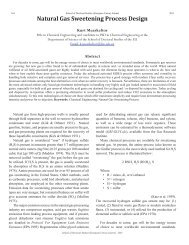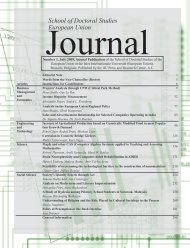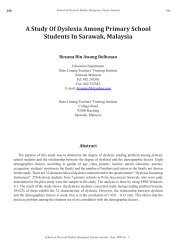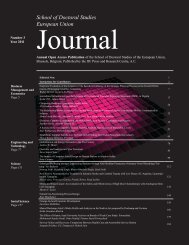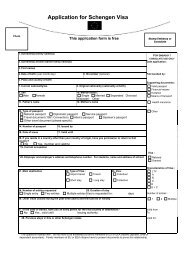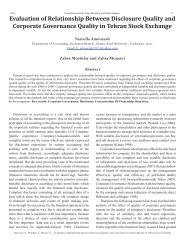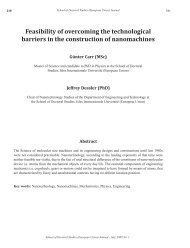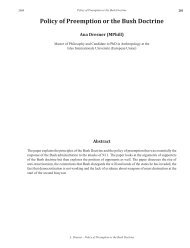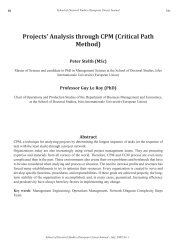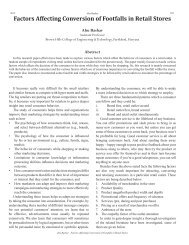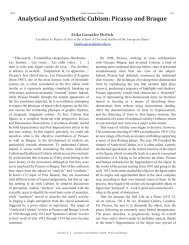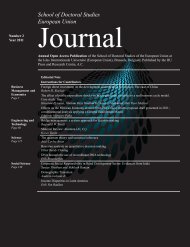Iiuedu.eu
Iiuedu.eu
Iiuedu.eu
Create successful ePaper yourself
Turn your PDF publications into a flip-book with our unique Google optimized e-Paper software.
26 School of Doctoral Studies (European Union) Journal2011Failingit⎧ ⎛ ⎡α+ β1OLSIZE⎫it+ β2TLTAit+ β3WCTAit⎤⎞⎪ ⎜⎟⎪= ⎨1+ exp⎜−⎢⎥⎢+ β4CLCAit+ β5OENEGit+ β6NITAit⎥⎟⎬⎪ ⎜⎟⎪⎩ ⎝⎢⎣+ β⎥7FUTLit+ β8INTWOit+ β9CHINit+ εit ⎦⎠⎭Where:OLSIZE: Log (total assets/GNP price-level index).The index assumes a base value of 100 for 1988.TLTA: Total liabilities divided by total assets.WCTA: Working capital divided by total assets.CLCA: Current liabilities divided by current assetsOENEG: 1 if total liabilities exceed total assets, 0otherwise.NITA: Net income divided by total assets.FULT: Funds provided by operations (incomefrom operation after depreciation) divided by totalliabilities.INTWO: 1 if net income was negative for the last2 years, 0 otherwise.CHIN: (NI t-NI t-1)/(|NI t|+|NI t-1|), where NI tisnet income for the most recent period. Thedenominator acts as a level indicator. The variableis thus intended to measure the relative change innet income.The variable of Failing is defined similar to previousmodels.c. Zmijewski (1984) probit modelFailing( α + β NITL + β TLTA + β CACL + ε )it= Φ1 it 2 it 3it−1it(2)(3)Where:RESIZE: Log (the number of outstanding sharesmultiplied by year-end share price then divided bytotal market value).LEXRETURN: Cumulative annual return in yeart-1 minus the value-weighted TSE index return inyear t-1.LAGSIGMA: Standard deviation of the residualderived from regressing monthly stock return onmarket return in year t-1.and other variables are defined in previous models.Now, Based on previous models, we present a logit typecombined model as follows:e. Combined modelFailingit⎧ ⎛ ⎡α+ β1X2it+ β2X3⎪ ⎜it⎢= ⎨1+ exp⎜−⎢+β3OENEGit+ β4INTWOit⎪⎜⎢56⎩ ⎝ ⎣+ β NITLit+ β CACLit+ εit−1⎤⎞⎫⎥⎟⎪⎥⎟⎬⎥⎟⎪⎦⎠⎭Where, all variables are defined in previous models. Weexpect that the predictive power of this model is higher thanthat of other models.To compare the predictive power of research modelsto future bankruptcy, we use the adjusted R2 and relatedVoung (1989) test (as In-sample prediction metric) and rootmean squared error (RMSE), mean absolute error (MAE)and mean absolute percent error (MAPC) (as out-of-sampleprediction metrics)−1(5)Where:NITL: Net income divided by total liabilitiesCACL: Current assets divided by current liabilities.and TLTA is defined in Ohlson's model.d. Shumway (2001) hazard modelFailingit⎧ ⎛ ⎡α+ β⎪ ⎜= ⎨1+ exp⎜−⎢⎢+ β4LEXRETURNit−1⎪ ⎜⎩ ⎝ ⎣⎢+ β5LAGSIGMAit−1+ εit1NITLit+ β2TLTAit+ β3RESIZEit⎤⎞⎫⎥⎟⎪⎥⎟⎬⎥⎟⎪⎦⎠⎭−1(4)DataWe use the 2009 version of Tadbirpardaz (the Iraniandatabase of Tehran Stock Exchange) annual data files andsample all firms in Tehran Stock Exchange between 2001and 2009 with sufficient data available to calculate theresearch variables. In some cases whereby the requireddata is incomplete, we use the manual archive in the TSE’slibrary. We eliminate banks and financial institutions fromsample. Imposing all the data-availability requirementsyields 1,532 firm-years over the period 2001–2009. This isthe full sample that we use for testing research hypotheses.School of Doctoral Studies (European Union) Journal - 2011



